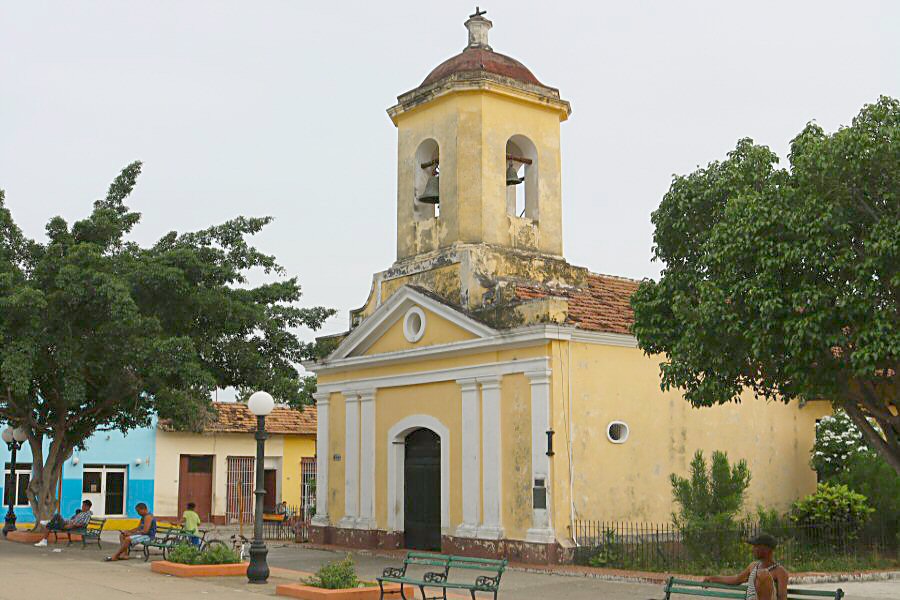Localization
Iglesia San Francisco de
Paula is located on Chinchquirá Street, on the south west side
of the Plaza Céspedes.
Opening Hours
under restoration


In 1772, Father Manuel Hernández de Rivera asked the city consul for financial aid to build a shrine of honor of the glorious San Francisco de Paula, where the Convento e Iglesia de San Francisco de Asís was located. However, the request was not accepted. Thereupon, Father Hernández de Rivera made a decision in 1787 and donated 200 reals every year from his earnings at the Aracas sugar mill, which he owned, to the San Francisco de Paula cult.
In 1791, Bishop Felipe Tres Palacios gave Father Hernández de Rivera the permission to build a hermitage or sanctuary dedicated to San Francisco de Paula within the borders of the city of Trinidad. The entrance of the place known as Camino de la Boca was chosen as the location.
The construction of the church and hospital began in 1810.
In 1831, priest José Joaquín Polo claimed that the Iglesia de San Francisco de Paula was built with the legacy left by a person named N. Pomiel to Father Manuel Hernández de Rivera. However, it is not clear whether this statement is true or not, because Pomile wrote on a tile that he bought from José González de Osorio, that his inheritance could be used on the condition of the construction of a church called Jesús Retacado. Again, according to Priest Polo, Hernández de Rivera started the construction of a church named San Francisco de Paula instead of Jesús Retacado and, moreover, the construction was realized in a different place. When Hernández de Rivera suddenly died, Sebastiana Hernández de Rivera and Juan Francisco Ramírez Hernández de Rivera, first cousin of Manuel Hernández, made great efforts to complete the construction.
The construction of the building was undertaken by the master builder Cristóbal Troyano, who also worked on the construction of the Convento e Iglesia de San Francisco de Asís.
Recently, it has been restored under the direction of the architect Marcela de Lara García from the Oficina del Conservador de Trinidad y the Vale de los Ingenios.
Currently, work is being done on the rescue of its mural decorations.